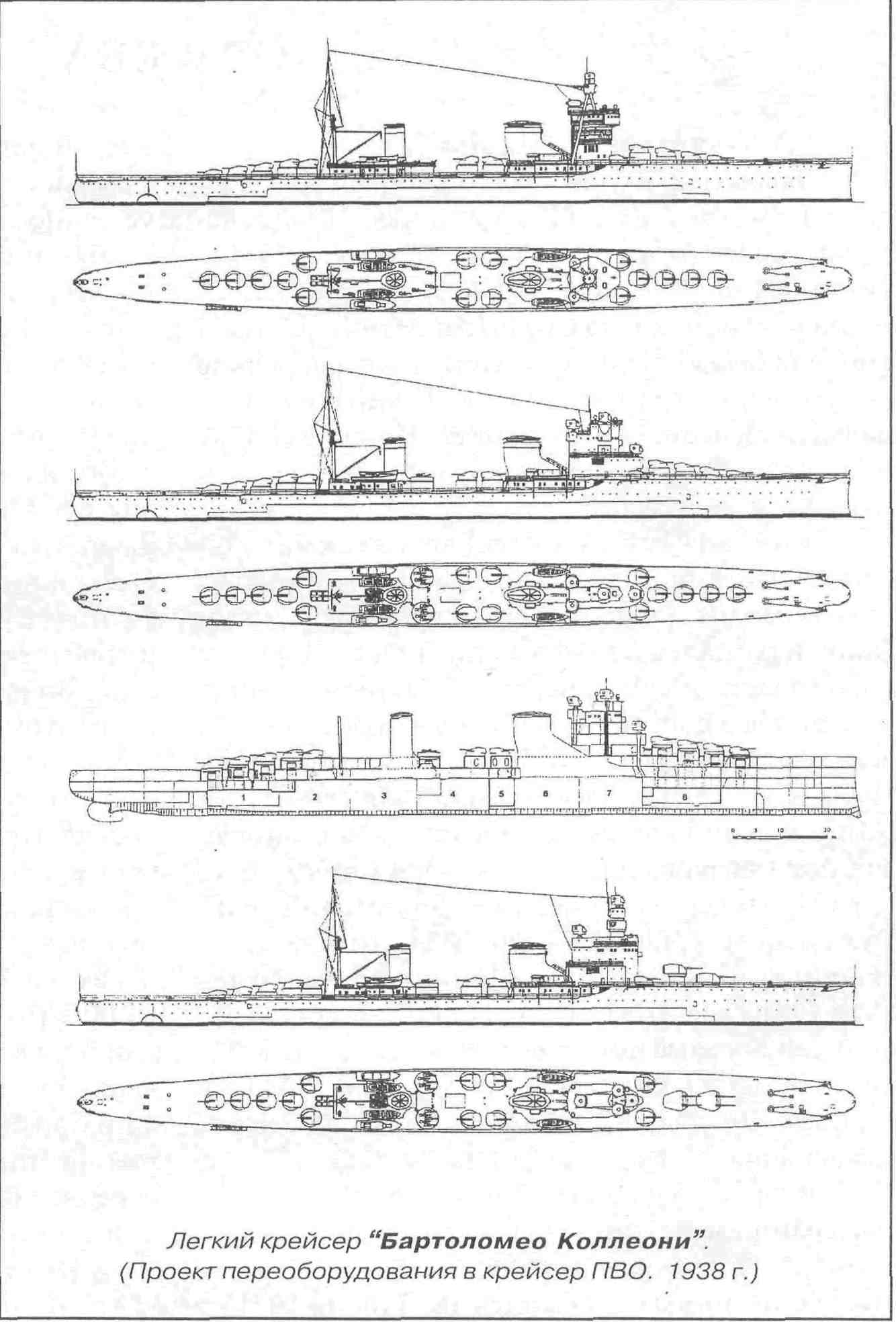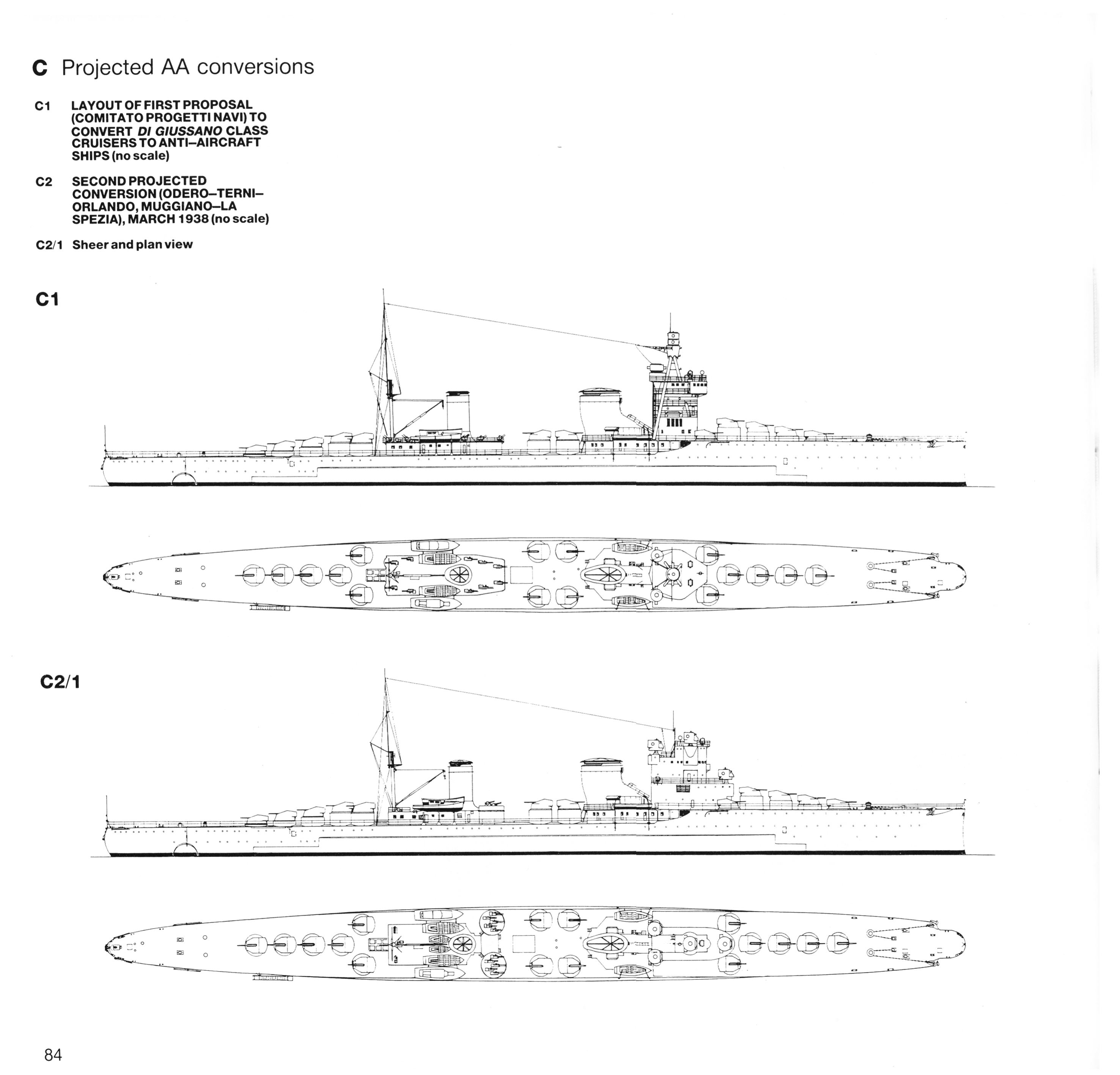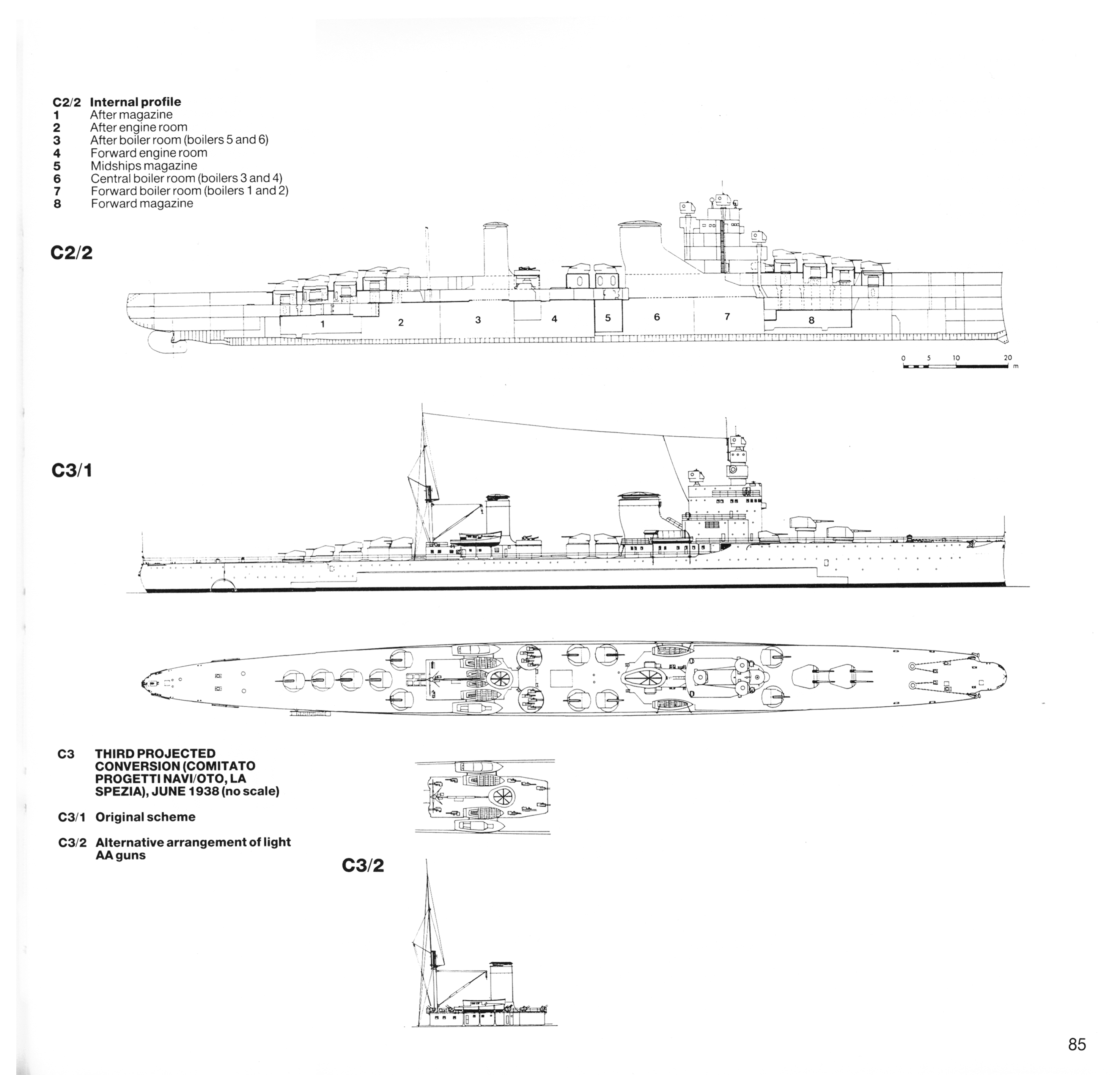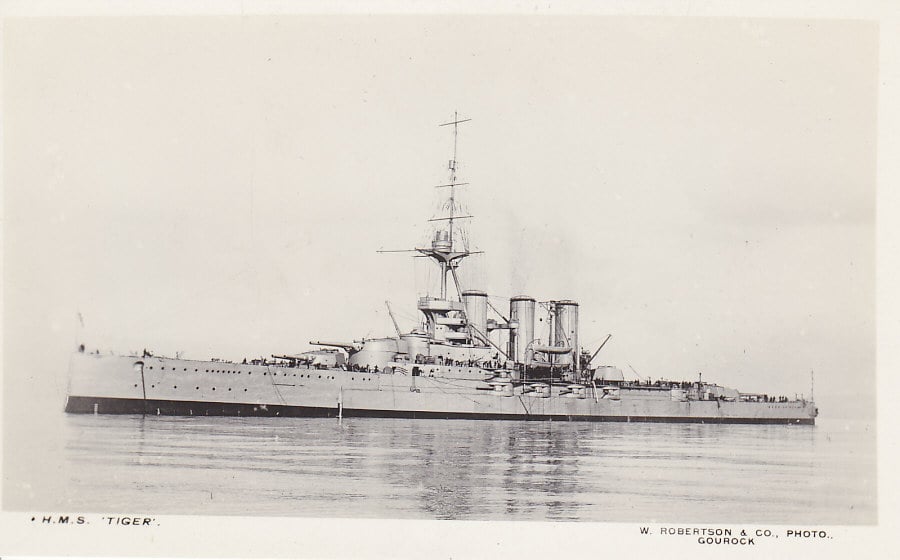- Joined
- 1 February 2011
- Messages
- 2,941
- Reaction score
- 3,624
Saving this from the now defunct but still avaiable WOWs forums, an old 2015 post about the proposed AA cruiser conversion of the 4 Alberto Di Giussano class cruisers.
According to Franco and Valerio Gay in The Cruiser Bartolomeo Colleoni published by Conway Maritime Press, there were several conversion plans, drafted both by the Comitato Progetti Navi (the in-house navy design team) and O.T.O.
The first design was presented by Comitato Progetti Navi in February 1938, it involved the removal of all 152mm turrets to replace them with 16 single 90mm/48 (the gun was still under development at the time and it was somewhat shorter, L48 instead of L50) supplemented by ten twin 20mm machineguns amidships. It was a pretty simple conversion, fire control equipment was to be installed on the slightly modified bridge, while ammunition magazines and hoists would have been modified to handle 90mm and 20mm ammuntions. Around the area of the 90mm mounts the deck would have been reinforced with 30mm of nickel-chrome steel plates, improving horizontal protection. The removal of the 152mm turrets was estimated to compensate for the added weight of the armour plates and the new armaments.
It's the first drawing of this picture from a Russian book (click on the picture for full resolution):

Meanwhile in March 1938 O.T.O. presented its own design which had been required by the Navy ministry, this is the conversion of your picture where it says "marzo 1938" and the second drawing from the picture I posted above. It was a more radical affair, the arrangement of the 16 90mm guns was identical, but it involved the full reconstruction of the bridge, removal of the tetrapod mast and installation of four directors, this allowed to control independently each of the three groups of 90mm guns and the 20mm machineguns, with obvious advantages in handling contemporary multiple aerial threats. The same 20mm were concentrated on two elevated and stabilised platforms just forward the second funnel, this solution would have significantly improved their arcs and volume of fire compared to the solution proposed in the earlier proposal.
The final design is the hybrid one, it was presented by Comitato Progetti Navi in June 1938, I believe it kept in account the O.T.O. proposal because it's similar for some aspects, but I'm not sure about it. Four fore 90mm single mounts are gone in favour of two twin 135mm/45 O.T.O. mounts; fire control installation was modified to handle the new gun, with a 6m rangefinder and relevant fire control installations, while high angle directors for the 90mm guns would have been reduced to three. It's peculiar that the book of Franco and Valerio Gay insists, twice, that the 135mm guns and relevant modifications to the magazines were located aft, not fore, but I think it's a mistake.
Personally I always favoured the second proposal, reducing volume of AA fire for a weak anti-surface capability looks like a bad compromise to me. The conversion was not carried out apparently because the AA armament of the capital ships and accompanying escorts was perceived as adequate, while pre-war strategy never considered the need of protecting traffic to Libya. Also it seems that there were bottlenecks in the production of the new 90mm/50 guns.
EDIT:
A variation of the third proposal called for one single elevated platform with the 20mm machineguns disposed at arc like in the first proposal, I suppose this variation lacked the stabilisation of the O.T.O. proposal. It's the "variante al progetto giugno 1938" in your picture, but it's not very clear from the side view, I'm going to post the relevant pictures from Conway's book to better illustrate it:


According to Franco and Valerio Gay in The Cruiser Bartolomeo Colleoni published by Conway Maritime Press, there were several conversion plans, drafted both by the Comitato Progetti Navi (the in-house navy design team) and O.T.O.
The first design was presented by Comitato Progetti Navi in February 1938, it involved the removal of all 152mm turrets to replace them with 16 single 90mm/48 (the gun was still under development at the time and it was somewhat shorter, L48 instead of L50) supplemented by ten twin 20mm machineguns amidships. It was a pretty simple conversion, fire control equipment was to be installed on the slightly modified bridge, while ammunition magazines and hoists would have been modified to handle 90mm and 20mm ammuntions. Around the area of the 90mm mounts the deck would have been reinforced with 30mm of nickel-chrome steel plates, improving horizontal protection. The removal of the 152mm turrets was estimated to compensate for the added weight of the armour plates and the new armaments.
It's the first drawing of this picture from a Russian book (click on the picture for full resolution):

Meanwhile in March 1938 O.T.O. presented its own design which had been required by the Navy ministry, this is the conversion of your picture where it says "marzo 1938" and the second drawing from the picture I posted above. It was a more radical affair, the arrangement of the 16 90mm guns was identical, but it involved the full reconstruction of the bridge, removal of the tetrapod mast and installation of four directors, this allowed to control independently each of the three groups of 90mm guns and the 20mm machineguns, with obvious advantages in handling contemporary multiple aerial threats. The same 20mm were concentrated on two elevated and stabilised platforms just forward the second funnel, this solution would have significantly improved their arcs and volume of fire compared to the solution proposed in the earlier proposal.
The final design is the hybrid one, it was presented by Comitato Progetti Navi in June 1938, I believe it kept in account the O.T.O. proposal because it's similar for some aspects, but I'm not sure about it. Four fore 90mm single mounts are gone in favour of two twin 135mm/45 O.T.O. mounts; fire control installation was modified to handle the new gun, with a 6m rangefinder and relevant fire control installations, while high angle directors for the 90mm guns would have been reduced to three. It's peculiar that the book of Franco and Valerio Gay insists, twice, that the 135mm guns and relevant modifications to the magazines were located aft, not fore, but I think it's a mistake.
Personally I always favoured the second proposal, reducing volume of AA fire for a weak anti-surface capability looks like a bad compromise to me. The conversion was not carried out apparently because the AA armament of the capital ships and accompanying escorts was perceived as adequate, while pre-war strategy never considered the need of protecting traffic to Libya. Also it seems that there were bottlenecks in the production of the new 90mm/50 guns.
EDIT:
A variation of the third proposal called for one single elevated platform with the 20mm machineguns disposed at arc like in the first proposal, I suppose this variation lacked the stabilisation of the O.T.O. proposal. It's the "variante al progetto giugno 1938" in your picture, but it's not very clear from the side view, I'm going to post the relevant pictures from Conway's book to better illustrate it:



